Transforming your garden into a sustainable oasis not only benefits the environment but also enhances the beauty and functionality of your outdoor space. By adopting sustainable home practices, you can revolutionize your garden, making it more eco-friendly and efficient.
In this guide, we’ll explore various techniques and ideas for creating a sustainable garden, from composting and water conservation to choosing native plants and organic gardening methods.
Whether you’re an experienced gardener or just starting out, these practices will help you cultivate a garden that is both beautiful and environmentally responsible. Get ready to embrace sustainable living and discover how small changes can make a big impact on your garden and the planet.
Garden with a Purpose: Explore Sustainable House Tips for a Thriving Oasis
Embracing Permaculture Principles in Your Garden
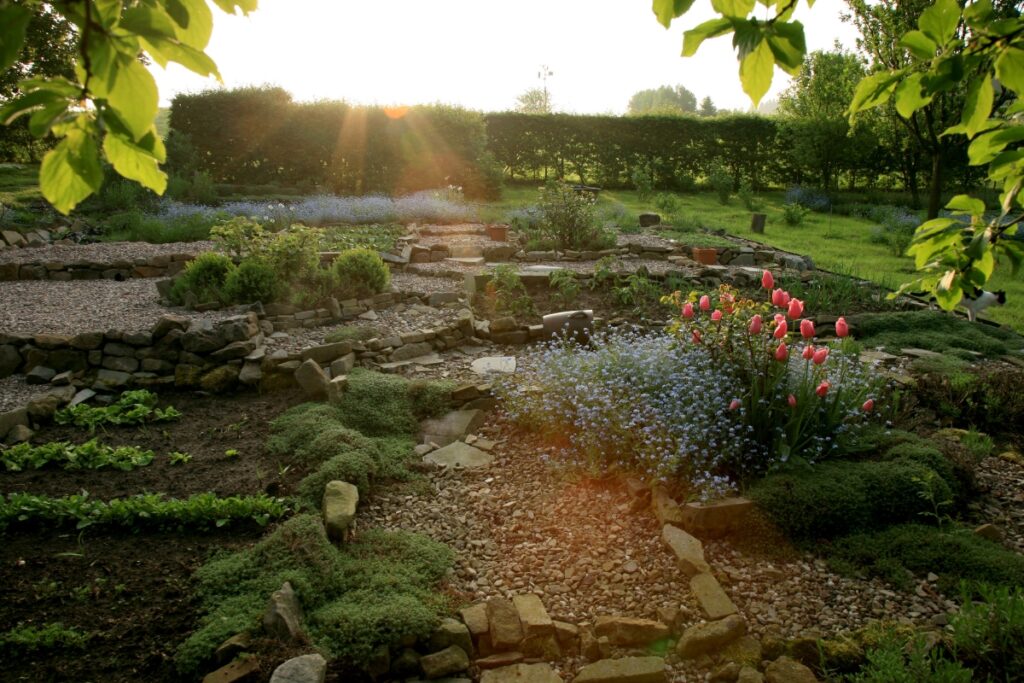
Permaculture is a sustainable house design system that aims to create self-sufficient ecosystems. By incorporating permaculture principles into your garden, you can maximize productivity while minimizing waste and environmental impact, resulting in more sustainable homes.
One of the key principles of permaculture is observation, which involves studying your garden’s natural patterns and processes to better understand how to work with them. Spend time watching the sun’s path, noting water flow during rain, and observing plant health throughout the seasons.
Another important principle is diversity, which encourages the cultivation of a wide variety of plants and animals. This helps create a balanced ecosystem that is more resilient to pests and diseases.
Interplanting different species can attract beneficial insects, enhance soil health, and reduce the need for chemical interventions. Including a mix of perennials and annuals, along with native plants, can further support biodiversity and ecological stability.
Permaculture also emphasizes the importance of building and maintaining healthy soil. Techniques such as composting, mulching, and using cover crops can improve soil fertility and structure, leading to more robust plant growth.
Water conservation is another critical aspect; implementing rainwater harvesting systems and designing swales to capture and store rainwater can reduce reliance on external water sources.
By embracing permaculture principles in your garden, you can create a harmonious environment where plants, animals, and humans coexist in harmony. This holistic approach not only yields abundant harvests but also fosters a deeper connection with nature, promoting sustainability and environmental stewardship.
Implementing Water Conservation Strategies
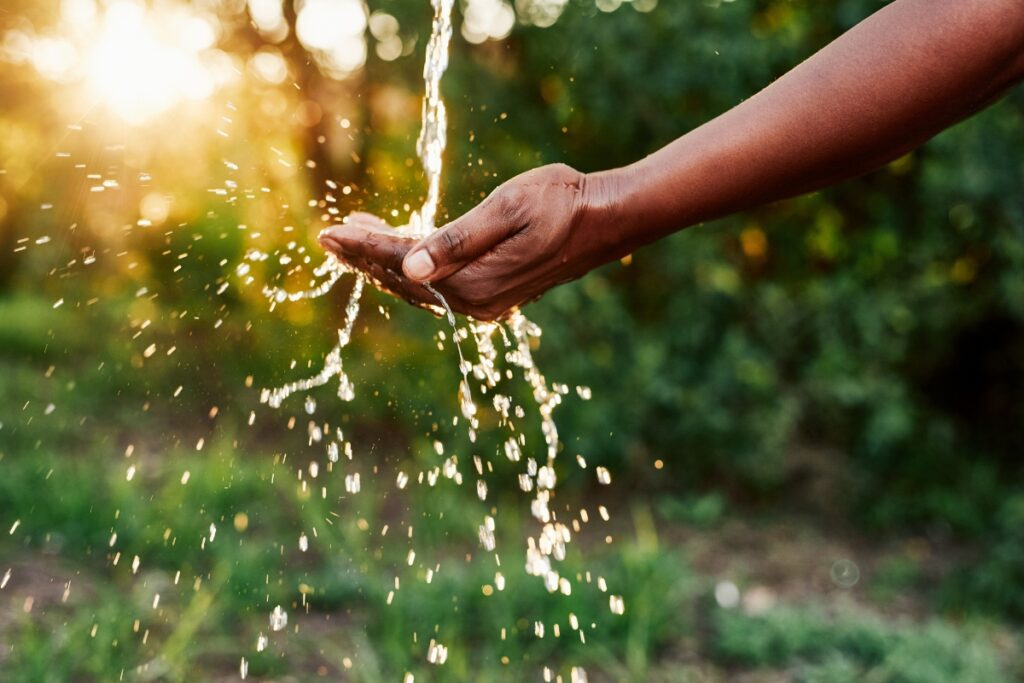
Water is a precious resource, and conserving it should be a top priority for every gardener. There are several water conservation strategies you can implement in your garden to reduce water usage without compromising plant health.
One effective strategy is mulching, which involves covering the soil with organic materials like straw, wood chips, or compost. Mulch helps retain moisture in the soil by reducing evaporation and suppressing weed growth, which can compete with plants for water. Additionally, mulch improves soil health as it decomposes, adding valuable nutrients.
Another strategy is using drip irrigation systems, which deliver water directly to the roots of plants, minimizing wastage and ensuring efficient water use. Drip irrigation can be set up with timers to provide precise watering schedules, further conserving water.
Rainwater harvesting is also an excellent way to conserve water. Installing rain barrels or larger catchment systems allows you to collect and store rainwater for garden use, reducing reliance on municipal water supplies.
Incorporating drought-tolerant plants into your garden design can also significantly reduce water needs. Native plants, in particular, are adapted to local climate conditions and often require less water once established.
Harnessing the Power of Composting
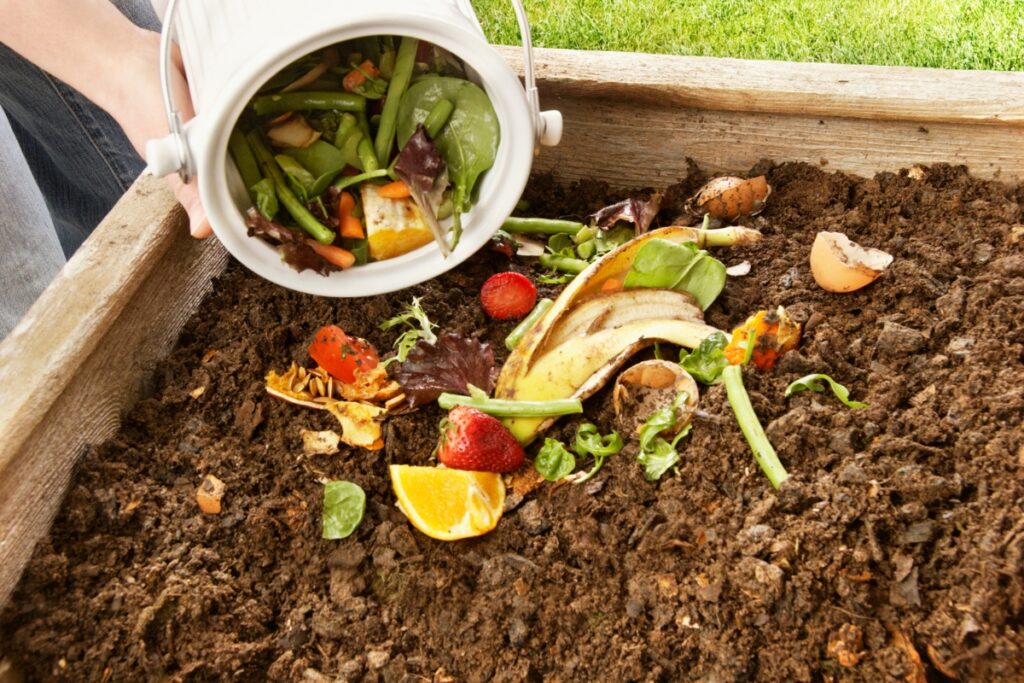
Composting is an excellent way to reduce waste while improving soil fertility. Instead of throwing away kitchen scraps and yard waste, you can transform them into nutrient-rich compost that will nourish your plants.
To start composting, collect organic materials such as fruit peels, vegetable scraps, coffee grounds, and leaves. Avoid adding meat or dairy products as they can attract pests.
Mix these materials with dry carbon-rich materials like shredded paper, dried leaves, or straw to maintain a balanced compost pile. The ideal ratio is about three parts brown materials (carbon) to one part green materials (nitrogen).
Turn the compost regularly to aerate it and speed up the decomposition process. Aeration helps introduce oxygen, which is vital for the microorganisms breaking down the organic matter. Keeping the compost moist but not waterlogged also aids in the process.
In a few months, you’ll have rich, dark compost ready to be used in your garden. This homemade compost improves soil structure, increases nutrient content, and enhances the soil’s ability to retain moisture. By harnessing the power of composting, you can create a more sustainable garden, reduce landfill waste, and promote healthier plant growth.
Creating a Biodiverse Garden Ecosystem
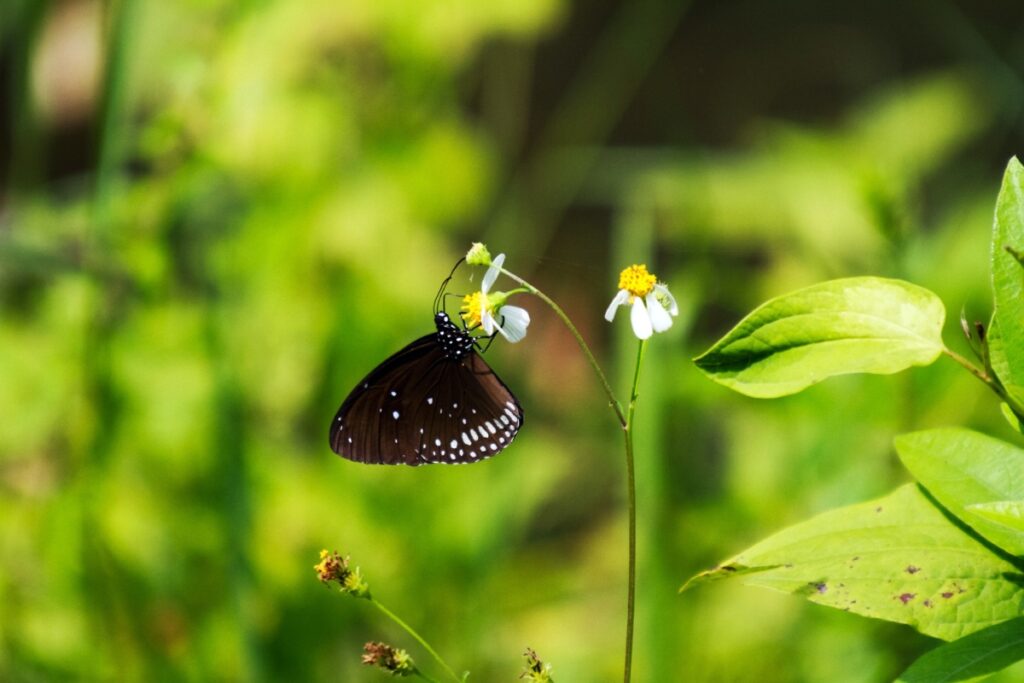
A biodiverse garden is one that supports a wide range of plant and animal species. By creating such an ecosystem, you can attract beneficial insects, birds, and other wildlife that help control pests and pollinate plants.
To promote biodiversity in your garden, plant a mix of native flowers, shrubs, and trees. Native plants are adapted to your local climate and soil, making them more resilient and less maintenance-intensive. They provide food and shelter for local wildlife, such as bees, butterflies, birds, and small mammals, which are crucial for a healthy ecosystem.
Avoid using chemical pesticides or herbicides as they can harm beneficial insects and disrupt the delicate balance of your garden ecosystem. Instead, opt for organic pest control methods, such as introducing ladybugs to combat aphids or using neem oil to deter harmful insects.
Incorporating water features like birdbaths or small ponds can attract amphibians and birds, further enhancing the biodiversity of your garden. Providing nesting boxes or insect hotels also encourages wildlife to take residence in your garden.
By creating a biodiverse garden, you not only foster a healthier environment but also enjoy a more dynamic and vibrant outdoor space. This approach leads to a self-sustaining garden that thrives with minimal human intervention, promoting ecological balance and sustainability.
Incorporating Sustainable Pest Management
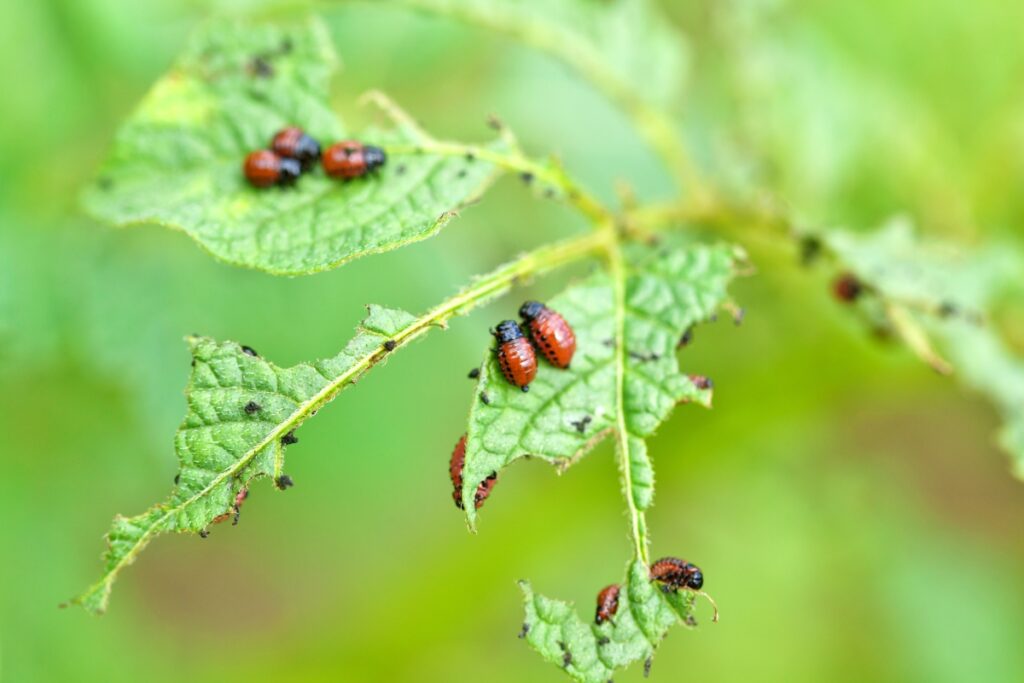
Pests are a common problem in gardens, but there are sustainable ways to manage them without resorting to harmful chemicals. Integrated Pest Management (IPM) is an approach that focuses on preventing pest problems through cultural practices and natural pest control methods.
Some IPM strategies include planting pest-resistant varieties, practicing crop rotation, attracting beneficial insects like ladybugs and lacewings, and using physical barriers like nets or row covers to protect plants from pests. Crop rotation helps prevent pests from establishing themselves by disrupting their life cycles.
Attracting beneficial insects is another key strategy. Planting a variety of flowers and herbs such as marigolds, dill, and fennel can attract predatory insects that feed on common garden pests. Additionally, maintaining healthy soil through composting and mulching can make plants more resilient to pest attacks.
Physical barriers, like nets and row covers, can protect plants from insect pests and larger animals. These barriers allow sunlight and water to reach plants while keeping pests out.
By incorporating these sustainable pest management tips, you can maintain a healthy garden ecosystem, reduce reliance on chemical pesticides, and promote biodiversity. This approach not only protects your plants but also contributes to a more balanced and environmentally friendly garden.
Cultivating Native Plants for a Thriving Garden

Incorporating native plants into your garden can help you establish a robust ecosystem that thrives with minimal effort, as these plants are well-suited to the specific climate and soil conditions of your area. Their adaptability makes them resilient and low-maintenance, needing less water and upkeep compared to other species.
Research native plant species that are suitable for your region and incorporate them into your garden home design. Choose a variety of plants that bloom at different times of the year to ensure continuous support for local wildlife.
Native plants also provide habitat and food sources for local wildlife, further enhancing biodiversity in your garden. They attract beneficial insects, birds, and other animals, creating a balanced ecosystem that helps control pests and pollinate plants.
Furthermore, native plants often have deep root systems that improve soil structure and increase its ability to retain water, reducing the need for frequent irrigation. They are also typically more resistant to local pests and diseases, which means fewer chemical interventions are necessary.
By cultivating native plants, you not only support local biodiversity but also contribute to the conservation of natural resources and the environment. This approach fosters a self-sustaining garden that harmonizes with the surrounding landscape, offering beauty, ecological benefits, and a sense of place.
Reducing Waste through Upcycling and Recycling
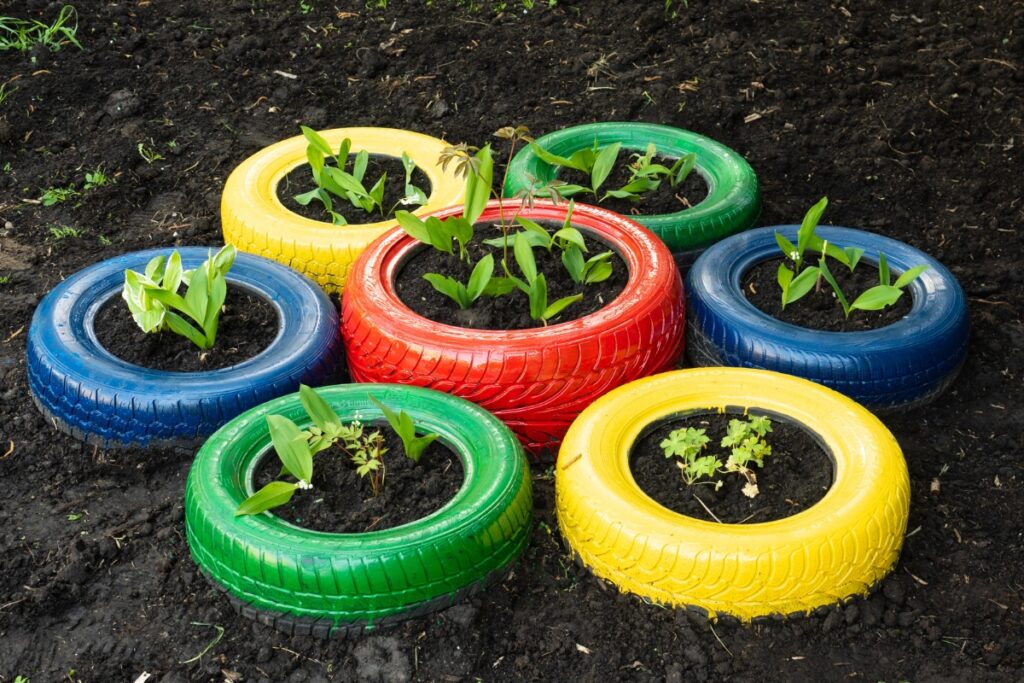
Gardening often generates waste, but there are ways to minimize it through upcycling and recycling. Instead of buying new pots or containers, repurpose old ones or use unconventional materials like old tires, pallets, or even broken household items. These can be creatively transformed into unique planters or garden decor, giving new life to objects that might otherwise be discarded.
Recycle plastic containers or invest in biodegradable alternatives. Many garden centers now offer pots made from compostable materials, which break down naturally over time. Additionally, using compost bins for organic waste such as kitchen scraps, leaves, and grass clippings can significantly reduce the amount of waste sent to landfills. This compost can then be used to enrich your soil, promoting healthier plant growth.
Consider setting up a rainwater harvesting system to further reduce waste and conserve water. Collecting and reusing rainwater minimizes the need for tap water and reduces runoff, which can carry pollutants into waterways.
By reducing waste in your garden, you contribute to a more sustainable household. Upcycling and recycling not only decrease your ecological footprint but also foster creativity and resourcefulness, making your gardening practices more eco-friendly and innovative.
Enhancing Soil Health with Organic Practices
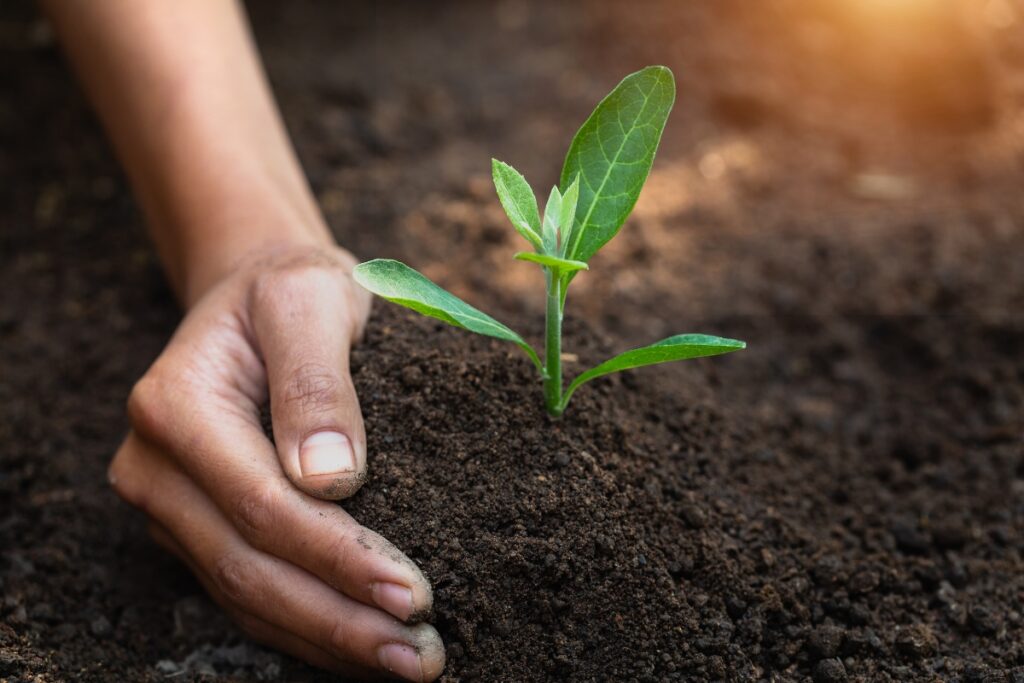
The health of your garden starts with the soil. By adopting organic practices, you can improve soil fertility while minimizing chemical inputs.
Add organic matter like compost or well-rotted manure to enrich the soil. These materials provide essential nutrients and improve soil structure, promoting better water retention and aeration. Use natural fertilizers such as bone meal or seaweed extract instead of synthetic ones. These organic fertilizers release nutrients slowly, ensuring a steady supply for your plants and reducing the risk of nutrient runoff.
Practice crop rotation to prevent nutrient depletion and control pests naturally. Rotating crops helps maintain soil fertility by alternating plants that consume different nutrients. It also disrupts pest and disease cycles, reducing the need for chemical interventions.
Mulching with organic materials like straw, leaves, or grass clippings helps retain soil moisture, suppress weeds, and gradually adds nutrients as it decomposes. Additionally, incorporating cover crops or green manures can enhance soil health by fixing nitrogen, improving soil structure, and preventing erosion.
By embracing organic practices, you foster a healthier garden ecosystem, support beneficial soil organisms, and live more sustainably in such a way that benefit both your plants and the environment.
Create a Purposeful Garden: Sustainable Tips for a Thriving Oasis
Sustainable living tips offer numerous benefits for both your garden and the environment as a whole. These sustainable tips not only help your garden thrive but also contribute to a greener future by conserving resources, reducing waste, and supporting biodiversity. Start implementing these practices in your garden today and be part of the movement towards a more sustainable and eco-friendly world.
Revolutionize your garden with sustainable tips and create an eco-friendly oasis that thrives. At Glover Landscapes, we specialize in sustainable landscaping solutions that enhance the beauty and health of your outdoor space. Contact us today at (404) 510-6437 or get a free estimate through our website form.


